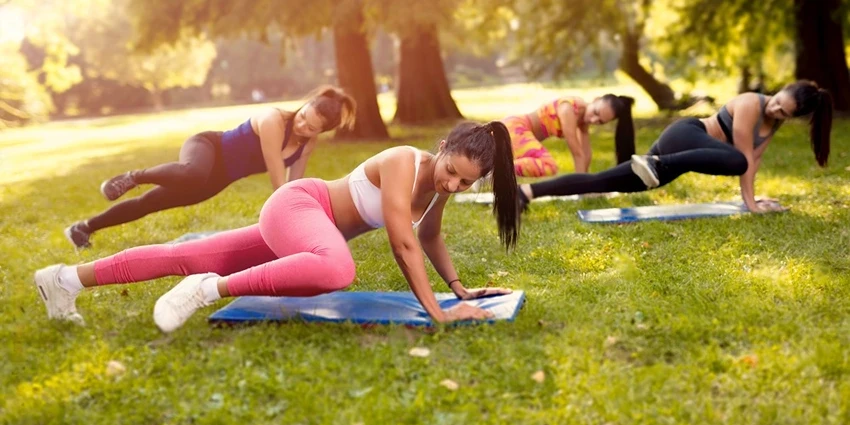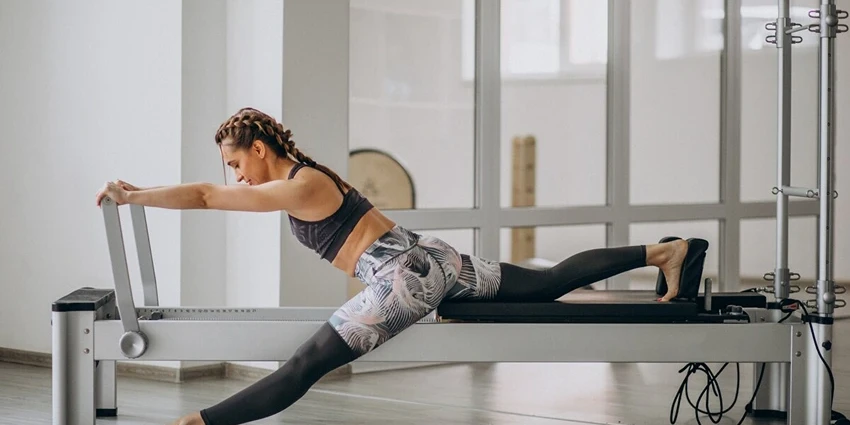You don’t need to engage in long, sweaty exercise sessions to reap the benefits of physical activity. In fact, easy workouts, especially for beginners, are often the best choices. Whether you’re at home or outdoors, these workouts are designed to build confidence, create lifelong habits, and promote well-being.
In This Article
Health Benefits of Easy Workouts

Easy exercise sessions serve as the foundation of a beginner’s fitness program. They help in:
- Establishing habits leading to weight loss and management.
- Improving brain function and mood.
- Reducing the risk of diseases.
Losing Weight with Easy Workouts
For those new to exercise, low-intensity activities can help burn more calories. When combined with a balanced diet, weight loss becomes more achievable. Research has shown that easy exercises can effectively burn fat and reduce cortisol levels, a hormone associated with abdominal weight gain.

Easy Workouts for Beginners
Here are some beginner-friendly workouts to consider:
Bodyweight Training
No special gym equipment is needed. A simple 10 to 15-minute session can include:
- Five incline push-ups
- Five chair squats
- Five walking lunges
Chair Workout
For those not comfortable standing for extended periods, a seated workout can be effective. Spend 10 to 15 minutes doing exercises while seated.
Dancing
Dancing is not only fun but also a great way to get moving. Put on your favorite tunes and dance away for 15 to 30 minutes.
Online Workouts
There are numerous online workouts available, many of which are free. They offer easy routines for beginners, allowing you to exercise in the comfort of your home. Here’s a list of the best online exercise classes to get you started.
Shadowboxing
Shadowboxing at home requires no equipment and is also a great stress-reliever.
Stair-climbing
Spend 10 minutes walking up and down stairs. If stairs aren’t available, use a step or platform.

Easy Outdoor Workouts
Outdoor exercises come with added benefits, such as fresh air and a connection with nature.
Aqua Jogging
For those with joint issues, aqua jogging in a pool can be beneficial. It involves walking in water without letting your feet touch the pool’s bottom.
Biking
Biking is a great way to explore your neighborhood or local trails. Aim for a continuous ride of 20 to 30 minutes.
Walking
A simple 30-minute walk can be broken down into a 5-minute slow start, 20 minutes at a brisk pace, and a 5-minute cooldown.
Gardening or Yard Work
Engaging in gardening or yard work is both therapeutic and a good source of physical activity. Activities like digging, weeding, raking, and mowing can get your heart rate up.
Tables with Relevant Facts
| Activity | Calories Burned (per 30 mins) | Benefits |
|---|---|---|
| Walking | 100-150 | Cardiovascular health, muscle endurance |
| Dancing | 200-300 | Flexibility, mood enhancement |
| Biking | 250-400 | Leg strength, cardiovascular health |
| Gardening | 150-200 | Full-body workout, relaxation |
| Equipment | Use | Benefits |
|---|---|---|
| Dumbbells | Strength training | Muscle building, bone density |
| Resistance Bands | Flexibility exercises | Muscle toning, joint health |
| Yoga Mat | Yoga, Pilates | Flexibility, core strength |
3. The Science Behind Quick Workouts
3.1. Efficiency Over Duration
- Quick workouts can be just as effective as longer sessions if they’re intense and well-structured.
- High-Intensity Interval Training (HIIT) is a prime example, where short bursts of high-intensity exercises are followed by rest periods.
- Benefits:
- Burns calories faster due to the increased intensity.
- Boosts metabolism for hours post-workout.
- Improves cardiovascular health and muscle endurance.
3.2. The Role of Consistency
- It’s better to do a short workout consistently than to skip exercise altogether.
- Consistency helps in building a habit, ensuring long-term commitment.
3.3. Adapting to Your Lifestyle
- Not everyone has the luxury of time. Quick workouts can fit into any schedule.
- They can be done anywhere – at home, in a hotel room, or even in the office.

4. Crafting the Perfect Quick Workout
4.1. Start with a Warm-Up
- Always begin with a 5-minute warm-up to prepare the body and prevent injuries.
- Activities can include jumping jacks, dynamic stretching, or a quick jog.
4.2. Incorporate Full-Body Movements
- Choose exercises that target multiple muscle groups.
- Examples: Burpees, squat jumps, and push-ups.
4.3. Intensity is Key
- The goal is to elevate the heart rate quickly.
- Use intervals: 30 seconds of work followed by 15 seconds of rest.
4.4. Don’t Forget to Cool Down
- Spend 5 minutes cooling down to bring the heart rate back to normal.
- Incorporate static stretches to improve flexibility.
5. FAQs on Quick Daily Workouts
Aim for 2-3 workouts weekly for beginners. As you progress, 4-6 workouts per week are ideal.
The best time is when it fits your schedule. Some prefer mornings, while others opt for evenings.
For adults, 150-300 minutes of moderate-intensity or 75-150 minutes of high-intensity exercise weekly is recommended.
Absolutely! A warm-up prepares the body and reduces injury risk.
A mix of both is ideal. Strength training builds muscle, while cardio improves heart health.
Include a rest day once or twice a week, depending on your fitness level.
6. Tips and Tricks for Maximum Results
6.1. Stay Hydrated
- Drink water before, during, and after the workout.
- Hydration aids muscle function and recovery.
6.2. Listen to Your Body
- If you feel pain (not to be confused with discomfort), stop immediately.
- Ensure you’re using the correct form to prevent injuries.
6.3. Mix It Up
- Change your workout routine every few weeks to prevent plateaus.
- Introduce new exercises to keep things exciting.
6.4. Seek Expert Advice
- At Rac Women, we offer personalized workout plans tailored to your needs.
- Connect with our trainers for guidance and support.
Ellen Crandall
Meet Ellen, your fitness compass in the world of athletics, training, and gym culture. With a commitment to well-being and a penchant for all things workout-related, Ellen is here to guide you on your journey to a healthier, fitter you. Join the fitness revolution, led by Ellen, and embrace the power of an active lifestyle.




